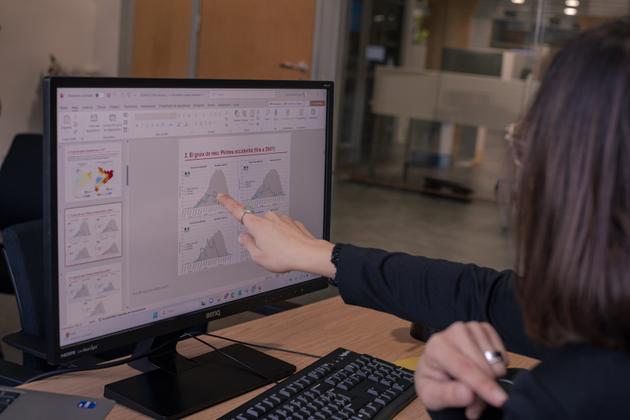Barcelona’s rude awakening after years-long drought – Technologist
From a distance, the illusion worked well, giving the effect of a fairly dense lawn. Up close, the traces of green paint at the foot of the palm and olive trees were unmistakable. In Barcelona, the five-star Torre Melina Gran Melia hotel has found a solution to the Catalan government’s ban on watering the lawn in response to the region’s three-year drought: painting the dry, sun-yellowed tufts of grass covering its gardens green. “There used to be continuous water sprinklers,” explained Ramon Vidal, manager of this 391-room luxury establishment, which has just opened its doors after four years of renovations. “The paint, which is biodegradable and lasts for three months, was the gardener’s idea. High-quality artificial lawns would not have been a good solution, as they also need to be watered.”

While the idea may seem surprising, it’s not far off the one announced on Monday, February 5 by Spain’s Minister for Ecological Transition Teresa Ribera, and Catalonia’s Regional Minister for the Environment and Agriculture, David Mascort. If it doesn’t rain by June, two cargo ships will make daily round trips between the under-used seawater desalination plant in the port of Sagonte, in the Valencia region, and the port of Barcelona, which is being prepared in advance. This will supply 40,000 cubic meters of drinking water per day, equivalent to 14% of the average consumption of the Catalan capital and 3% of the Barcelona metropolitan area.
“This is not in itself a solution to the drought, but a one-off response for strategic equipment that could find be part of an emergency situation,” said Mascort, referring in particular to hospitals. “The Spanish government will do everything to guarantee the supply of drinking water,” added Ribera. Far from reassuring Barcelonans, these measures worried them. Until then, the possibility that the city might actually run out of water had remained unthinkable.
State of emergency
Sitting on the beach, Jenny, like many delighted tourists and locals, was enjoying the effects of the persistent anticyclone that has brought record temperatures since January. She was stunned when a state of emergency for drought was announced on February 1, accompanied by restrictions on water consumption. “I didn’t think it was that serious,” admitted the 48-year-old Italian start-up employee, who has lived in Barcelona for the past 24 years.

Catalonia has had little to no rain for over three years now. Since autumn 2020, the accumulated rainfall deficit has exceeded 500 millimeters, the equivalent of a year’s rainfall in Barcelona. “The situation is catastrophic,” summed up Sarai Sarroca, director of the Catalan Meteorological Service. “Never before have we experienced such a long and widespread drought across the territory. But what’s most worrying is the rise in temperatures. We didn’t anticipate such a leap until the second half of the century. Not to mention the lack of snow in the Pyrenees, which is usually a reserve for the warmer months.” The forecasts for the spring are hardly cause for optimism: “I’m very worried,” the meteorologist admitted. “And even more than about climate change per se, about the fact that we lack adaptation mechanisms: we need to do a better job of forecasting, reacting and alerting the population.”
You have 75% of this article left to read. The rest is for subscribers only.



